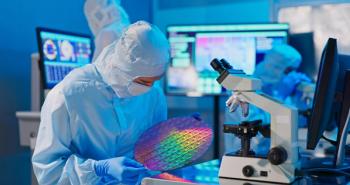
The Most Significant Advances in ICP-MS
In honor of Spectroscopy’s celebration of 30 years covering the latest developments in materials analysis, we asked experts to assess the current state of the art of six key spectroscopic techniques. Here, the experts weigh in on what they considered the most important advance in inductively coupled plasma–mass spectrometry (ICP-MS) in the last 5–10 years.
Collision–Reaction Cells
Collision–reaction cells, for removing spectral interference in quadrupole instruments, topped the list of critical advances in ICP-MS.
"The use of collision–reaction cell [CRC] technology has taken much (though not all) of the guesswork out for spectral interference removal for most analyses at an instrumentation price point that makes it an affordable option for laboratories," said Craig Westphal, a principal investigator at Chemours Analytical, a subsidiary of DuPont. "In particular, using kinetic energy discrimination as a universal interference removal mode coupled with the advancements in usability (such as improved autotuning and better software interfaces) has established ICP-MS as a routine technique in many labs."
"Until the introduction of the collision–reaction cell, the quality of data obtainable was matrix-limited because on-line interference removal was not possible," noted Traci A. Hanley, who is a chemist at the United States Food and Drug Administration (US FDA). "The only way to obtain better quality data was through off-line sample pretreatment or mathematical interference correction equations."
Steve Ray, who will be an assistant professor at the University at Buffalo starting this August, agreed. "The impact that this development has made is difficult to underestimate," he said.
Triple-Quadrupole ICP-MS
Another important development is the triple-quadrupole ICP-MS instrument, which further improves on the interference-removal capabilities of collision–reaction cells.
The ICP–triple-quadrupole MS system eliminates ionized matrix with the first quadrupole. The analyte of interest then enters the CRC, where isobaric and multiply charged interferences can be removed or the analyte can be reacted to a different mass before the second quadrupole filters the mass-to-charge ratio (m/z) corresponding to analyte of interest. The addition of the first quadrupole for matrix removal allows reactions in the CRC to be matrix independent and generate a reproducible and robust reaction. Through this series of events the background signal is greatly reduced (if not removed).
Frank Vanhaecke, who is a senior full professor of analytical chemistry at Ghent University in Belgium, explained the value of this setup. "While it was clear from the start that tandem ICP-MS (also called triple-quadrupole ICP-MS) provides enhanced control over the ion–molecule chemistry proceeding in the reaction cell, it is now realized that the advantage of double mass selection (before and after the reaction cell) can be exploited in quite a different way as well," he said. "Identifying the ions formed upon ion–molecule reaction via product ion scanning is so straightforward that nowadays, quite complex reaction product ions such as Ti(NH3)6+ (with NH3 as reaction gas) or 48TiF2(CH3F)3+ (with CH3F as reaction gas) can be identified as those ions providing the lowest limits of detection and interference-free conditions." As a result, he said, tandem ICP-MS is more than just an improved form of collision–reaction cell ICP-MS.
David Koppenaal, who is the chief technology officer for the Environmental Molecular Sciences Laboratory at the Pacific Northwest National Laboratory, agreed that CRCs and the ICP–triple quadrupole instrument are important advances, but also noted their limitations. "A downside of CRC techniques is they are in many cases element- or isotope-specific and thus are not global or universal across all interferences," he said. "If better, precise control of ion energy and ion energy spreads could be achieved, kinetic energy discrimination approaches might be made more effective and universal (at least for all polyatomic ion interferences)."
New Detectors
Bonner Denton, the Galileo Professor of Chemistry and Professor of Geosciences at the University of Arizona, cited another innovation: new detector technology based on complementary metal oxide–semiconductor (CMOS) circuitry.
"I feel strongly that these new detectors will replace charge coupled devices (CCDs) and charge injection devices (CIDs) in optical spectroscopy and conventional Faraday cups and ion multipliers in mass spectrometry," he said, noting that there are already two commercial instruments that use CMOS detectors, one of which can simultaneously observe all masses from lithium through uranium.
ICP-TOF-MS
ICP-TOF-MS instrumentation was also named as a significant advance. "High-speed ICP-TOF-MS also has an important role to play in analytical chemistry, such as in nanoparticle analysis and in imaging-that is, for mapping the distribution of elements over biological tissues or other natural or manmade materials," said Vanhaecke. In addition, it has been essential for the development of mass cytometry. "Mass cytometry is based on ICP-TOF-MS, but serves a totally different field of science, outside the field of analytical chemistry."
_______________________________
This article is an edited excerpt of
The article is part of a special group of six articles covering the state of the art of key techniques, also including
Newsletter
Get essential updates on the latest spectroscopy technologies, regulatory standards, and best practices—subscribe today to Spectroscopy.





